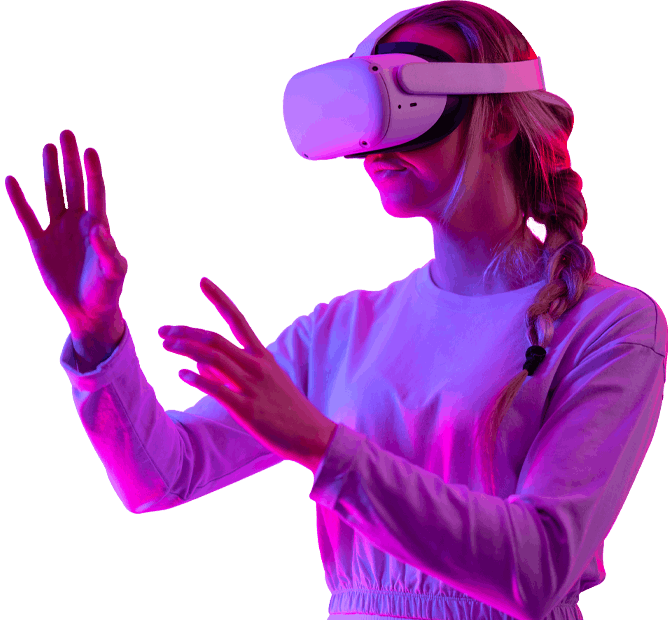At its core, Virtual Reality is a computer-generated environment that allows users to experience and interact with a 3D world as if they were actually there. Unlike traditional screens (like TVs or laptops), VR fully immerses you by blocking out the real world and replacing it with a digital one.
To step into VR, you usually need a VR headset—a device worn over the eyes that displays realistic visuals and often includes motion sensors to track your head and hand movements. Some systems also come with controllers or gloves to let you interact with objects inside the virtual environment.
How Does VR Work?
VR combines several technologies to create an immersive experience:
- Visual Display: The headset projects a 3D environment in high definition, often with a wide field of view.
- Motion Tracking: Sensors follow your head, eyes, and hand movements to adjust the digital world in real time.
- Audio: Spatial sound adds another layer of realism, making you feel like sounds are coming from different directions.
- Haptic Feedback: Some devices even provide vibrations or touch sensations, so you can “feel” virtual objects.
Where is VR Used?
VR is no longer just about gaming. Here are some key areas where it’s making an impact:
- Entertainment & Gaming: Immersive worlds where players feel part of the action.
- Education & Training: From medical students practicing surgeries to pilots learning to fly.
- Healthcare: Used in therapy, pain management, and rehabilitation.
- Architecture & Design: Visualizing buildings and spaces before they are built.
- Work & Collaboration: Virtual meeting rooms for remote teams.
Why is VR Important?
VR is changing the way humans interact with technology. It allows us to experience things beyond our physical limits—exploring places we’ve never been, practicing skills without risk, or connecting with people in more meaningful ways online.
The Future of VR
As technology advances, VR is expected to become more affordable, portable, and realistic. With the rise of the metaverse and mixed reality experiences, the line between the digital and physical worlds will continue to blur.


